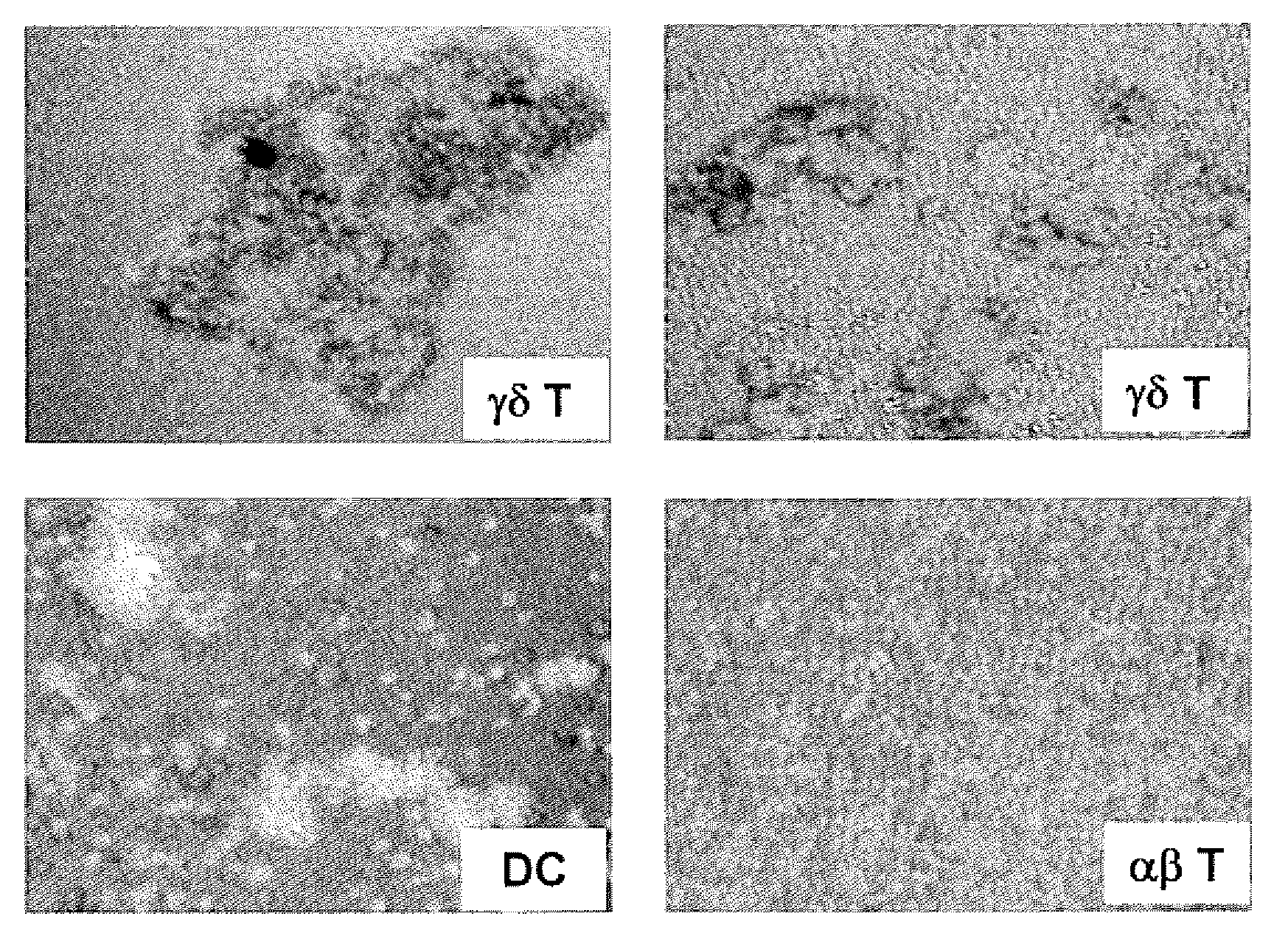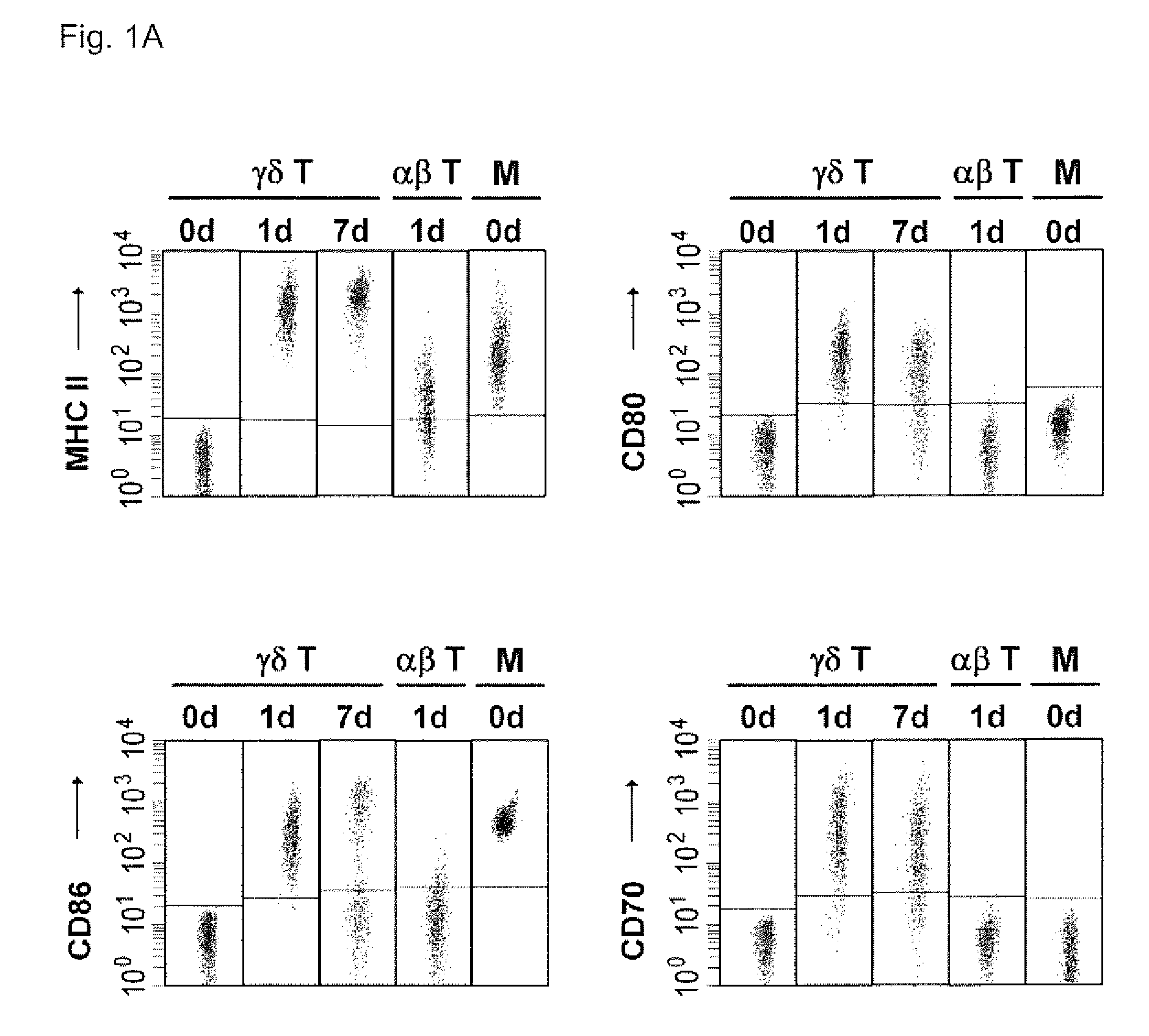Preparation Of Antigen-Presenting Human Gamma-Delta T Cells And Use In Immunotherapy
a technology of gamma-delta t cells and immunotherapy, which is applied in the field of preparation of antigen-presenting human gamma-delta t cells and use in immunotherapy, can solve the problems of not being further defined, poorly immunogenic, and not supporting the role of t cells in antigen presentation, so as to maintain efficient antigen-presenting functions, facilitate purification, and induce strong primary and secondary t helper cell responses
- Summary
- Abstract
- Description
- Claims
- Application Information
AI Technical Summary
Benefits of technology
Problems solved by technology
Method used
Image
Examples
examples
Abbreviations
[0089]DC dendritic cell
LN lymph node
PP Peyer's patch
MHC major histocompatibility complex
APC antigen-presenting cell
Vδ1+ T cells Vδ1+-TCR chain expressing γδ T cells
Vγ2Vδ2+ T cells Vγ2Vδ2+-TCR chain expressing γδ T cells
TT Clostridium tetani tetanus toxin
PPD Mycobacterium tuberculosis purified protein derivative
TSST-1 Staphylococcus aureus toxic shock syndrome toxin 1
PHA phytohemagglutinin
IFN-γ interferon-γ
TNF-α tumor necrosis factor-α
IL interleukin
FACS fluorescence-activated cell sorter
MFI mean fluorescence intensity
SD standard error
CFSE carboxyfluorescein diacetate succinimidyl ester
1. Cell Isolation and Generation
γδ T Cells
[0090]Human peripheral blood mononuclear cells (PBMCs) are isolated from heparin-treated donor blood buffy coats or fresh blood by Ficoll-Paque centrifugation according to standard protocols (Brandes et al., 2003). Out of PBMCs, γδ T cells are positively selected with...
PUM
| Property | Measurement | Unit |
|---|---|---|
| concentrations | aaaaa | aaaaa |
| concentrations | aaaaa | aaaaa |
| concentration | aaaaa | aaaaa |
Abstract
Description
Claims
Application Information
 Login to View More
Login to View More - R&D
- Intellectual Property
- Life Sciences
- Materials
- Tech Scout
- Unparalleled Data Quality
- Higher Quality Content
- 60% Fewer Hallucinations
Browse by: Latest US Patents, China's latest patents, Technical Efficacy Thesaurus, Application Domain, Technology Topic, Popular Technical Reports.
© 2025 PatSnap. All rights reserved.Legal|Privacy policy|Modern Slavery Act Transparency Statement|Sitemap|About US| Contact US: help@patsnap.com



